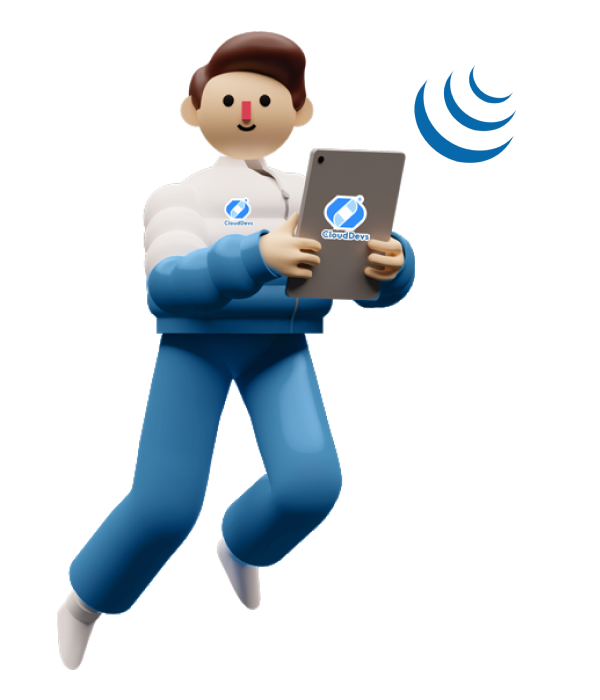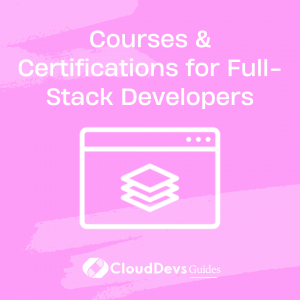Hire fullstack developers to meet your project needs from a preferred time zone within 24 hours!
Chosen from an elite pool of pre-screened software developers to hire fullstack developers who are ideal for all your project needs.
CloudDevs continues to be your trusted provider of remote tech talent from your preferred time zone, with a talent pool of over 8000 highly-vetted senior developers. We can help you seamlessly hire talented fullstack developers best-fitting to your unique project needs, within just 24 hours.
With a 7 day risk free trial

Our Fullstack Developers
Our top talents come from world leading companies
Michael
Senior WooCommerce Developers Ex-Concentrix


Esteban
Senior WooCommerce Developers Ex-CCU


Flavio
Senior WooCommerce Developers Ex-IEMA


Richard
Senior WooCommerce Developers Ex-Watson Creative


How to Hire Fullstack Developers
through CloudDevs?
3 easy steps to hire Fullstack developers in 24 hours



1. What is fullstack development?
Fullstack development refers to the practice of developing both the front-end and back-end portions of a web application or software. So when you hire fullstack developers, ensure they possesses the skills and knowledge to work on both the client-facing side and server-side of a project. This includes designing and implementing user interfaces, creating APIs, managing databases, and handling server configurations.
By having a broad understanding of various technologies and programming languages, fullstack developers are able to seamlessly integrate different components to build functional and efficient applications. Their ability to work across the entire development stack allows them to take a holistic approach to problem-solving and enables them to create end-to-end solutions. Overall, fullstack development offers the advantage of versatility and enables developers to have a comprehensive understanding of the entire application development process.
2. Why should you hire fullstack developers?
- Designing and Developing Applications: Fullstack developers are responsible for designing and developing web applications. They work on both the front-end and back-end components of the application, ensuring seamless functionality and a user-friendly interface.
- Database Management: Fullstack developers are proficient in managing databases. They design and implement efficient database structures and ensure data integrity and security.
- Front-end Development: Fullstack developers are proficient in front-end technologies such as HTML, CSS, and JavaScript. They are responsible for creating visually appealing and responsive user interfaces.
- Back-end Development: Full stack developers are skilled in back-end technologies such as server-side programming languages (e.g., Python, Ruby, Java) and frameworks (e.g., Django, Ruby on Rails, Spring). They develop the logic and functionality that powers the application.
- API Development: Fullstack developers design and develop APIs (Application Programming Interfaces) that enable communication between different software systems. They ensure that APIs are efficient, secure, and well-documented.
- Testing and Debugging: Fullstack developers are responsible for testing and debugging their code to identify and resolve any issues or bugs. They perform unit testing and ensure the overall quality of their application.
- Deployment and Maintenance: Fullstack developers are involved in deploying applications to production environments and maintaining them. They ensure that the applications are secure, scalable, and performant.
- Collaboration: Full stack developers often collaborate with cross-functional teams, including designers, project managers, and other developers. They actively participate in discussions, provide technical insights, and contribute to the overall project success.
- Continuous Learning: Full stack developers stay updated with the latest technologies and trends in web development. They continuously learn new tools, frameworks, and programming languages to enhance their skills and deliver high-quality applications.
- Problem Solving: Fullstack developers possess strong problem-solving skills. They analyze complex requirements and find innovative solutions to meet business needs.
Therefore, fullstack developers have diverse roles and responsibilities, ranging from designing and developing applications to managing databases, testing, deployment, and collaboration with cross-functional teams. They possess a wide range of technical skills and are adaptable to different technologies and frameworks.
3. Key skills to lookout for when you hire fullstack developers?
HTML: HTML is the standard markup language used for creating web pages. It is the foundation of all frontend development and is essential for building web pages. Fullstack developers must be proficient in HTML in order to create well-structured web pages with semantic markup.
CSS: CSS, or Cascading Style Sheets, is used to style web pages. It controls the layout and appearance of elements on a web page. Fullstack developers need to have a solid understanding of CSS to create visually appealing and responsive web pages.
JavaScript: JavaScript is a scripting language that adds interactivity to web pages. It is commonly used in frontend development to create dynamic UIs, handle user input, and handle browser events. Fullstack developers need to have a strong knowledge of JavaScript to build interactive and intuitive web applications.
Programming Languages: When you hire fullstack developers check their proficiency in several backend programming languages required to build server-side applications. Popular backend programming languages include PHP, Python, and Java. Each language has its own strengths and weaknesses, and fullstack developers need to have a solid understanding of these languages to choose the right language for a project.
Databases: Fullstack developers also need to have a strong knowledge of databases to store and manage data. Popular databases used by fullstack developers include MySQL, PostgreSQL, and MongoDB. Each database has its own features and advantages, and fullstack developers need to have a deep understanding of these databases to choose the most suitable database for a project.
4. What are the costs of hiring fullstack developers?
The costs of hiring fullstack developers can vary depending on several factors. One of the main factors affecting their hourly rates is the level of experience and expertise they possess. Developers with more experience and a proven track record of delivering high-quality projects often command higher rates. Another factor is the location of the developer. In regions where the cost of living is higher, the hourly rates for fullstack developers tend to be higher as well.
Additionally, the demand for fullstack developers can also impact their rates. If there is a high demand for their services and a limited supply of experienced developers, the hourly rates may increase.
Lastly, the complexity of the project and the specific technologies required can also influence the rates. Projects that involve the use of cutting-edge technologies or require specialized knowledge may result in higher hourly rates for fullstack developers.
Overall, when considering the costs of hiring fullstack developers, it is important to take into account these factors that can affect their hourly rates.
5. How can you hire expert fullstack developers?
Hiring expert fullstack developers is a crucial task that requires a well-defined process to ensure the recruitment of highly skilled professionals. This document outlines the step-by-step processes involved in hiring expert fullstack developers:
Define Job Requirements: Start by clearly defining the job requirements for the fullstack developer position. Determine the specific programming languages, frameworks, and technologies required for the role. Identify the level of expertise needed in each area.
Create Job Description: Develop a comprehensive job description that accurately reflects the role and responsibilities of an expert fullstack developer. Include information about the company, team, and any specific projects the developer will be involved in, Clearly state the required qualifications, skills, and experience.
Screen Resumes: Review the received resumes to shortlist candidates who meet the required qualifications. Evaluate their experience, technical skills, and educational background.
Conduct Technical Interviews: Conduct initial technical interviews to assess the candidates’ technical capabilities. Assess their knowledge of popular frameworks, libraries, and tools used in fullstack development.
Assign Coding Challenges: Provide selected candidates with coding challenges to test their practical skills. Assign tasks that require them to showcase their proficiency in both front-end and back-end development. Evaluate their ability to write clean, efficient, and well-structured code. Schedule in-depth interviews with candidates who successfully complete the coding challenges.
Make an Offer: After completing the interview and reference check process, select the most suitable candidate. Provide necessary information about the company’s onboarding process and any pre-employment requirements.
6. How to create an attractive job description to hire fullstack developers?
- Job Responsibilities: Provide a comprehensive list of the primary responsibilities and tasks that the full-stack developer will be expected to handle. This should include both front-end and back-end development, database management, debugging, and collaborating with cross-functional teams.
- Required Skills and Qualifications: Clearly outline the essential skills and qualifications necessary for the role. This may include proficiency in programming languages like JavaScript, HTML, CSS, and experience with frameworks such as React or Angular. Mention any specific tools, technologies, or methodologies that are important for the position.
- Education and Experience: Specify the educational background and relevant experience required for the role. This may include a bachelor’s degree in computer science or a related field, along with a minimum number of years of experience in full-stack development.
- Company Overview: Provide a brief overview of the company, its mission, and its core values. Highlight any unique aspects of the company culture or benefits that may be appealing to potential candidates.
- Compensation and Benefits: Although it is not necessary to provide specific salary figures, mentioning that compensation will be competitive based on experience and skills can attract more qualified candidates. Additionally, mention any other benefits or perks offered, such as flexible working hours, professional development opportunities, or health insurance.
Table of Contents
Fullstack Developer FAQs
To become a fullstack developer, you need a strong foundation in front-end technologies like HTML, CSS, and JavaScript. Additionally, knowledge of back-end technologies such as Node.js, Python, or Java is essential. Understanding databases, version control, and deployment processes are also crucial.
Yes, while fullstack developers are expected to have a broad understanding of various technologies, they can specialize in a specific technology stack based on their interests and career goals. For example, they can focus on the MERN stack (MongoDB, Express.js, React.js, and Node.js) or MEAN stack (MongoDB, Express.js, Angular, and Node.js).
Yes, fullstack developers are in high demand. Their ability to work on both front-end and back-end development makes them versatile and valuable in the tech industry. Many companies prefer hiring fullstack developers who can handle different aspects of a project, reducing the need for multiple specialized developers.
A fullstack developer differs from a front-end or back-end developer in terms of their skill set and responsibilities. While a front-end developer primarily focuses on creating the user interface and user experience, and a back-end developer works on server-side functionalities, a fullstack developer can handle both aspects.
Yes, a fullstack developer can work on mobile app development. They can leverage frameworks like React Native or Flutter to build cross-platform mobile apps that can run on both iOS and Android devices. Their knowledge of front-end and back-end technologies allows them to create mobile apps with seamless functionality.
Hiring a fullstack developer offers several advantages. They can handle both front-end and back-end development, reducing the need for multiple developers. This increases efficiency and streamlines the development process. Fullstack developers also have a broader understanding of the entire system, allowing them to troubleshoot issues more effectively.
To become a fullstack developer, one should start by learning the fundamentals of front-end technologies like HTML, CSS, and JavaScript. They can then progress to learning back-end technologies, databases, and server-side frameworks. Continuous practice and working on real-world projects will help in gaining the necessary skills and experience.
Yes, there are numerous online resources available to learn fullstack development. Websites like Codecademy, Udemy, and Coursera offer comprehensive courses and tutorials on fullstack development. Additionally, there are various online communities and forums where aspiring fullstack developers can connect with experts and seek guidance.
The salary range for fullstack developers can vary depending on factors such as experience, location, and the company’s size. On average, fullstack developers earn a competitive salary, with entry-level positions starting around $60,000 to $70,000 per year. With experience and expertise, the salary can go up to $100,000 or more annually.
Hire fullstack developers for all your development projects today!
Present us your unique fullstack developer requirement and let us ensure you a successful, smooth development experience for all your projects from our elite 8000+ pool.










